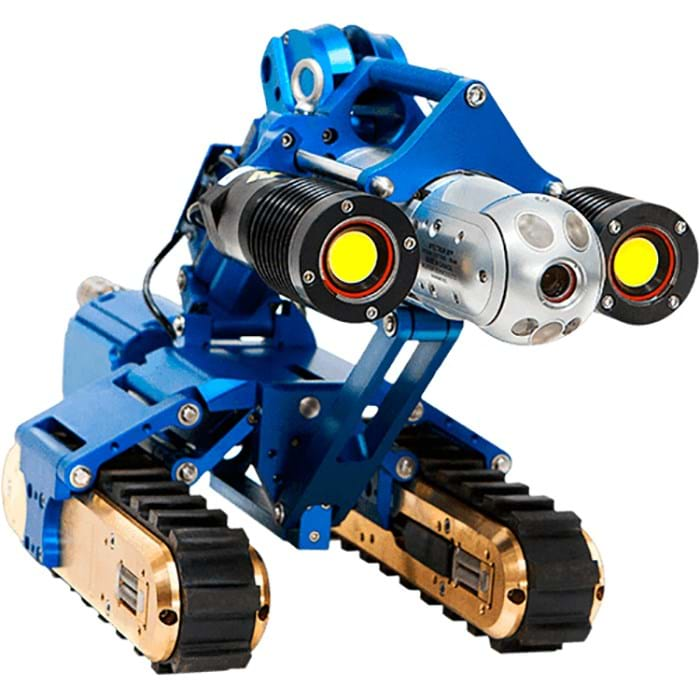Corrosion, the progressive deterioration of materials by chemical or electrochemical reaction with their environment, is recognized as one of the most significant problems resulting in hundreds of billions of dollars in losses every year. Corrosion or erosion impairs strength, appearance and impermeability to gases and liquids in materials and structures. Several industries have recognized that not having effective corrosion management is too expensive, and that substantial cost savings are possible through proper non-destructive testing (NDT) of critical assets.
Details
Corrosion, the progressive deterioration of materials by chemical or electrochemical reaction with their environment, is recognized as one of the most significant problems resulting in hundreds of billions of dollars in losses every year. Corrosion or erosion impairs strength, appearance and impermeability to gases and liquids in materials and structures. Several industries have recognized that not having effective corrosion management is too expensive, and that substantial cost savings are possible through proper non-destructive testing (NDT) of critical assets.
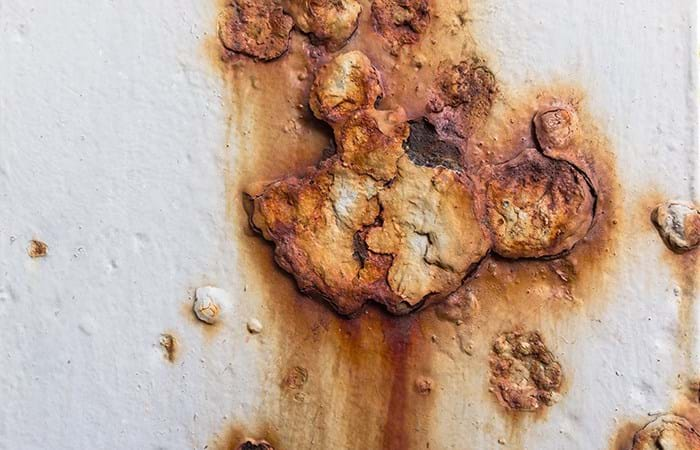
Corrosion materializes in a variety of forms:
- General corrosion is normally characterized by a uniform attack spread evenly across the entire surface of the metal. It may represent a small fraction of industrial failures, but the total tonnage wasted by general corrosion is the highest of any form.
- Galvanic corrosion occurs when two different metals have contact and are in a common substance, or when the same metal is exposed to different substance concentrations. This is applicable to the marine and offshore industries with metal infrastructure in contact with saltwater, for example.
- Pitting corrosion is usually difficult to detect because it is a small hole or cavity that may be covered or hidden by corrosion produced compounds.
- High-temperature corrosion is chemical degradation in metals due to heating. This is relevant to materials used in the power generation and aerospace industries that must resist extreme temperatures in environments containing potentially highly corrosive combustion products.
- Microbiologically influenced corrosion (MIC), or microbial corrosion, is usually caused by chemoautotroph promoted microorganisms, forming as localized corrosion.
- Flow accelerated corrosion (FAC), or flow-assisted corrosion, is the cause of multiple high-profile accidents in power plants. It is a corrosion method where a normally protective oxide layer on the metal surface dissipates in fast flowing fluid, and the bare metal corrodes to recreate the oxide.
- Corrosion under insulation (CUI) is localized external corrosion that develops in carbon and low alloy steel equipment that has been insulated. CUI occurs when water contacts the insulation, causing equipment to corrode as it is exposed to water and oxygen.
- Corrosion under fireproofing (CUF) is like CUI and one of the most prevalent and challenging problems to prevent. CUF is impacted by the environment, third party damage or maintenance conditions.
Like the diverse types of corrosion, different NDT techniques are optimal depending on the environment.
Ultrasonic Testing
When it comes to the volumetric assessment of corrosion, conventional ultrasound and advanced phased array ultrasonic testing (PAUT) is excellent for measuring key parameters and helping assess fitness-for-service of capital assets and infrastructure. Metal loss anomalies like gouging and corrosion reduce wall thickness which is measured with PAUT. PAUT can typically evaluate the depth and length of erosion found, providing quick imaging.
The cutting edge M2M Gekko® and M2M Mantis™ phased array systems have a growing reputation for being the most advanced PAUT instruments on the market. M2M was the first brand to deliver portable phased array flaw detectors capable of driving matrix arranges and performing TFM in real time. Mantis is a light and economical version of Gekko using the same technologies and software interface, Capture™. With a 16:64 pulsers receivers architecture, Mantis combines advanced PAUT, conventional UT, TOFD and real-time Total Focusing Method. TFM is a powerful technique that focuses at each point of a user specified zone for accurate defect characterization and high-resolution imaging. Real time imaging with speed up to 30 frames per second provides a clear image with defect contouring.

The RMS PA phased array inspection solution delivers 100% corrosion mapping coverage of critical assets. The solution can perform corrosion-mapping 10 times faster at a higher resolution compared to conventional UT. Automated corrosion mapping has become an integral part of NDT inspection campaigns and is widely accepted in corrosion management programs. Detection capabilities include general corrosion and erosion, microbiological induced corrosion (MIC) and hydrogen blistering (HB) with non-intrusive inspection (NII). This solution is deal for storage tanks, pressure vessels, pipelines and other critical structures susceptible to corrosion in harsh environments including oil and gas, offshore, mining and assets at temperatures up to 200 degrees Celsius.
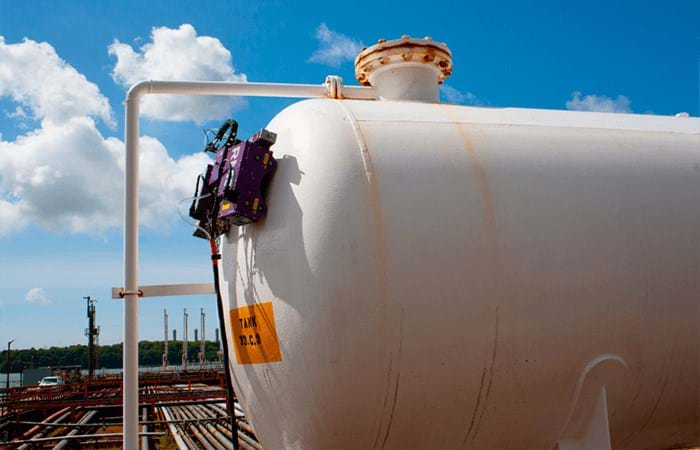
Long Range Ultrasonic Testing
Teletest Focus+™ is guided wave pipe corrosion inspection system that can focus sound energy into specific regions of pipes to measure the distribution of corrosion around the circumference at a specific distance. This is invaluable where pipes are inaccessible, enabling inspectors to make more informed decisions about the need for further action. Developed to screen pipework for metal loss damage, the Focus+ uses a pulse-echo technique to inspect long lengths of piping from a single test point. It is a proven solution for the detection of corrosion under insulation for the petrochemical industry.
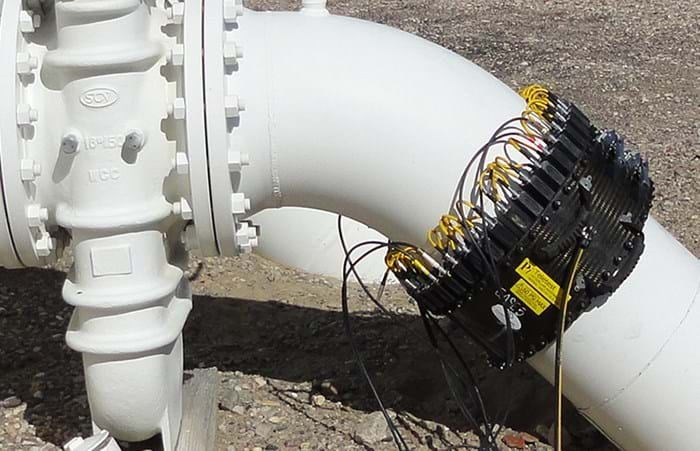
Magnetic Flux Leakage
Magnetic Flux Leakage (MFL) can be performed with the Silverwing Pipescan, a pipeline corrosion detection system that is easy to use, cost effective and portable, enabling rapid screening and detection of random internal corrosion in pipe runs and small diameter vessels. It features a high probability of corrosion and can be used in conjunction with UT follow up for quantifying any indications. Alarm sensitivity is adjustable making it possible for operators to calibrate Pipescan to detect corrosion above the defined reporting level, but ignore low level, irrelevant corrosion signals.
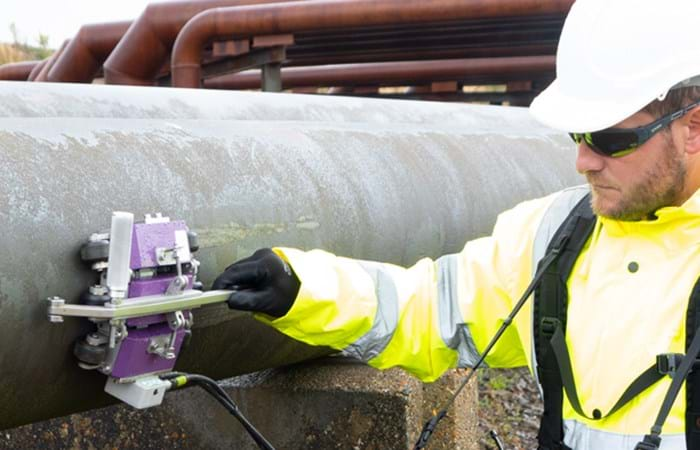
Pulsed Eddy Currents
Eddyfi Lyft® is a high-performance patented pulsed eddy current solution featuring a portable instrument, with real-time C-scan imaging, fast data acquisition, and grid and dynamic scanning modes. Lyft can scan through thick insulation as well as aluminum, stainless steel and galvanized steel weather jackets. The patent pending high-resolution PECA™ probe is designed specifically for the inspection of scabs and corrosion blisters.
Lyft can be used for several detection applications:
- Corrosion under insulation (CUI)
- Corrosion blistering and scabs
- Flow accelerated corrosion (FAC)
- Corrosion under fireproofing (CUF)
- Surface corrosion
- Corrosion under coatings
Remote Visual Inspection
Remote visual inspection (RVI) offers a solution for hard-to-reach locations susceptible to corrosion and erosion. With vivid imagery, robotic inspection crawlers provide fast and efficient integrity assessments. Our Inuktun Versatrax™ crawlers, like the Versatrax 150™, allow for the internal inspection of pipelines. Typical defects found include pitting, dents, and corrosion. Early detection of these defects allows operators to prioritize repairs and maintenance and extend the onshore or offshore pipeline’s fitness for purpose. While RVI is one of the most common ways to detect corrosion and evaluate asset integrity, Eddyfi Technologies offers advanced non-destructive testing (NDT) solutions that can be integrated for even more inspection possibilities, ensuring that operators collect repeatable, actionable, meaningful and preventative data results they can trust.
Many industries recognize the value in proper corrosion management through regular NDT of critical assets. Eddyfi Technologies offers complementary solutions for corrosion defect detection applications.
